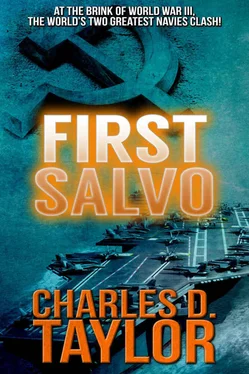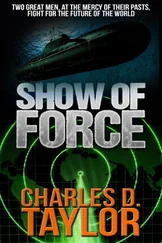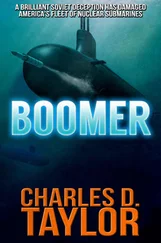Though subject to UN censure as a result of the previous day’s Security Council ruling, Soviet vessels in the Sea of Japan continued to harass U.S. naval units, and at least one Japanese destroyer reported damage under similar circumstances.
While it was rare that the Soviet Navy would have more than one-third of their offensive units at sea at a given time, more than sixty percent of their Pacific Fleet conducted exercises in the Sea of Japan, extending the length of the Japanese islands. Similar exercises were also conducted by their Baltic Fleet within the confines of that sea. In the Northern Fleet, satellite reconnaissance showed that all but two submarines were under way. Since eighty to ninety percent of Soviet submarines were normally in port at any given time, this confirmed that not only did the Russians plan to reinforce the Fifth Escadra in the Mediterranean, but they likely were massing to cut off the vital supply routes to Europe.
Based on U.S. satellite recon the previous day, the Norwegian government now officially requested assistance from the United States to investigate the silence from their territory of Svalbard. Timing on the part of American intelligence had been critical, for if Norway had remained silent, the U.S. would have had to request permission to insert its SEAL team. Satellite photos revealed 1) little normal activity around the Norwegian settlement of Longyearbyen; 2) increased activity by Aeroflot at the Longyearbyen airport; 3) the supply ship with unknown deck cargo tracked from Murmansk was photographed anchored off Barentsburg, the major Soviet settlement on Spitzbergen.
A major resurgence of terrorist activities, coupled with leftist antiwar-antinuclear demonstrations, began to occur as predicted. Rioting broke out toward the end of the workday on D minus 5 in Tokyo, creating massive transportation jams. One of the consequences was that Japanese industry was brought to a standstill on ensuing days. Leftist organizations limited or halted all international transportation to and from Japan. Assessments at that time indicated that successful confrontation by these leftist groups could have brought down the government within three days. CIA contacts in most countries indicated that terrorist schools in Havana, Moscow, Libya, Pajkow in East Germany, Ostrava in Czechoslovakia, and Simferopol in the Crimea had apparently exported their student bodies by D minus 6. Reports of these terrorists surfacing in various underground cells in West Germany, France, Belgium, Italy, the Netherlands, the Scandinavian countries, and Japan were confirmed by D minus 4. A concentration of females from these schools in critical capital cities indicated an effort to subvert high-government officials.
Insertion of terrorists on a major scale was a tactic that had concerned European defense chiefs during a meeting in Brussels the previous year. It was projected that about five days before launching an attack against the West, the Soviet Union might utilize this method to create civilian dissension, weaken government authority to call up reserve military units, and instill anti-American feelings in both the NATO countries and Japan. Combined with KGB disinformation campaigns, the tactic was highly successful. To counter this, the following units were alerted: British SAS, West Germany’s GSG-9, Israel’s GIRU 269, France’s Gigene, Italy’s SAST, Spain’s GEO, and all of the Netherlands’ marine corps spec units.
Six new satellites were also launched in the preceding forty-eight hours from remote bases in the Soviet Union. Four were identified as ASAT (antisatellite) units, each one settling in close proximity to U.S. reconnaissance satellite orbits.
“Wouldn’t be without him.” There was one man Bernie Ryng trusted over all others when he was sent out — Lieutenant Harry Winters. Harry was Ryng’s protégé, if such a thing could be said to exist in their murky world. He was a mustang, a former enlisted man who had finally accepted a commission, and the only reason Winters ever accepted it was so that he could stick with Bernie Ryng. Ashore, they went their own way, but on any kind of mission, they were inseparable. They worked perfectly as a twosome, and when a larger group was needed, Winters always took charge of the other half of the SEAL team. Ryng could have had any executive officer he wanted. The volunteers were waiting in line. But Harry Winters was always there to lead men and deliver when the going got rough. Bernie wouldn’t go without him.
The initial leg of Ryng’s flight was to Gander, Newfoundland, to join up with Winters, who had brought the team there the day before with all the gear Ryng had requisitioned. Forty-five minutes later, they were airborne, this time for Reykjavik. After refueling, they headed up north, hugging the coast of Greenland.
When Svalbard was a thousand miles off the starboard wing, they turned due east. Leveling off below radar-acquisition level, they tracked on a homing signal from a trawler fifty miles off the island’s west coast. It not only looked like a fishing boat, it was even experiencing a successful catch. Manned by the Norwegian navy, she was one of the small fleet maintained in that area for just such an emergency.
Ryng could sleep anywhere. Lieutenant Winters woke him an hour before arrival. There was just enough time to pull on wet suits. Watertight equipment packs were pushed out the cargo door, parachutes opening automatically as each cleared the craft.
With the deafening howl of engines and wind rushing by outside, there was never a reason for the eight men to communicate verbally. Anything important could be expressed by a tap on the shoulder, a soft jab in the ribs, a hand touching either side of the head — the silent language of men who trusted and depended on each other.
The green light above the door flicked on. Now it was their turn! Harry Winters, always the first out, stepped to the hatch, flashed his customary V sign, and was gone. Tradition was vital on this team; many in special operations become superstitious the longer they survive and Winters had given the victory sign in that same manner since the first day they had jumped as a team.
Martin Gable was next. He considered it his duty to give Winters, his underwater demolitions partner, a slap on the butt as the lead man jumped. Harry would always claim that Gable’s “love pat,” as he called it, reminded him to start breathing after his parachute opened. Gable flashed his usual smile at Mel Harper, his white teeth setting off his black face, and he was gone. Harper and Gable were demolitions experts whom Ryng had selected years before when he was instructing. Mel was short, Gable tall, and they became Mutt and Jeff to the team. Louie Chamas, radioman, corpsman, and language expert, followed after doing his version of the two-step, for luck, before he exited.
The team chief, Denny Bush, waved his arms to catch Ryng’s attention. On the ground he was the team clown, able to imitate with precision every admiral they had ever come in contact with. Now, as Bernie Ryng watched with amusement, Denny pointed outside, then back to his chest, as if to inquire if he was next. Ryng had seen this before and nodded his head, pointing to the hatch. Denny looked out, shook his head, and backed away slightly; then he went through the same exercise again, this time with a smile, ending by pinching his nose as he went through the hatch like a kid jumping off a log into the water. His partner, Wally, followed without hesitation. Always the perfectionist, Wally did everything automatically. A former Marine, he’d transferred to the SEALs because he knew they were involved in covert operations and he couldn’t imagine a military career without action. When he asked Ryng if he could join the team, he explained that he was not the type who could wait for someone to declare war. During his entire career, he had never been wounded, not even cut or bruised during training. He was the iron man.
Читать дальше












